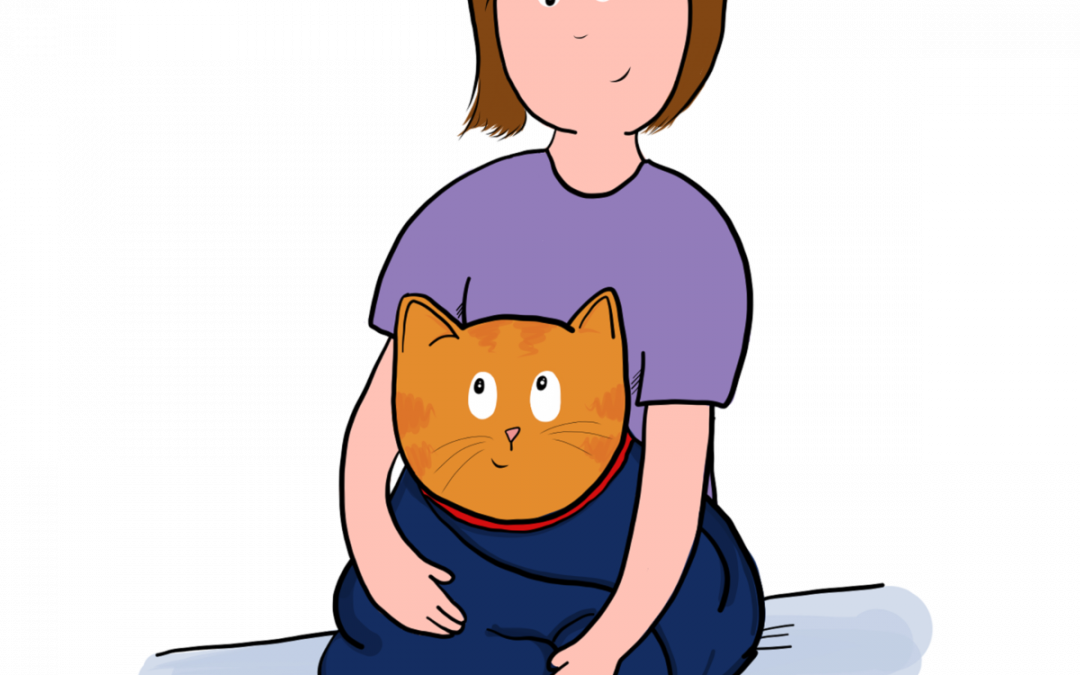5 Top tips for cat owners from an expert.
As a professional cat carer and handler, I’ve seen all sorts of techniques come and go. Scruffing is definitely one that we should consign to the history books. We’ve many more alternatives available to us now, and I believe unless it’s an emergency, scruffing is no longer an option.
What is scruffing?
The term describes the gripping of the fur and skin at the base of a cat’s neck. This type of restraint can stop the cats’ natural behaviour from fleeing or fighting. As a student veterinary nurse (many years ago!), I was taught that this was the best way to hold a nervous cat to prevent being bitten.
Furthermore, I was assured that it would cause the cat to relax – just like when a parent cat carries its kitten to safety. And so, I commonly used scruffing and advised owners on how to scruff their cats to trim nails, medicate or groom at home safely.
Fortunately, by the time I had qualified, I had learned that kittens are only carried by their parents during the first few weeks of their lives when they have a body reflex that makes them go limp. This instinct is soon lost and doesn’t reoccur. As adult cats, scruffing can trigger fear and stress.
Sadly, I know that scruffing and other types of inhumane restraint are still being used by many people today. There’s a perception that scruffing is the only way to get the job done quickly or the only way to prevent the handler from being injured. In reality, gentle handling is more likely to result in greater success and safety for both.
1. Go slow to go fast
Do you remember the fable of the tortoise and the hare? The moral of the story is that you can be more successful by doing things slowly and steadily than by acting quickly and carelessly.
Taking your time is the key to managing a fearful or anxious cat. Doing things at their pace, somewhere they want to be, may well result in a positive outcome whereby minimal handling is required. For example, you can administer topical medications (many flea and worm treatments are now spot-on) while your cat is distracted by food or treats.
If you have to keep your cat still, cradle it against your body in a position where it feels most comfortable. Speak quietly and calmly and stroke the facial pheromone sites – cheeks, chin, forehead.
2. Easy to Give
Significant advancements in palatable medications for cats have been made, including flea, worm, lice, and mite preventions in ‘treat’ form that many cats will readily eat. These new products are being developed all the time so always check to see what is now available.
3. Help the medicine go down
Cats are super suspicious of anything new – including smell and taste. There are all sorts of ways that you can slowly introduce medications and treatments so that they take them of their own accord or with very little intervention. You can read all about these techniques in my previous blog.
4. Swaddling
Already well documented in studies of baby swaddling, research on animals has also found that the effects of light pressure on their body reduces anxiety and promotes relaxation. Specifically designed for this purpose, a Wrapsio wrapped around your cat (we call this a Purrito!) will not only help calm your cat, but the unique scratch-proof fabric also provides protection should any paws and claws appear.
Spraying the Wrapsio with a feline calming pheromone such as valerian 15 minutes before use will send “happy messages” to your cat to increase the sensation of safety and security. Much like a weighted blanket or a comforting hug during stressful times!
5. Stop and sedate
Some cats may be too fearful or become stressed with any handling, and in these instances, sedation or anxiety-reducing medications are the best options.
You may feel that medicating your cat seems more extreme than physical restraint; however, cats learn and remember events or the person that causes pain or fear and will actively avoid re-experiencing that again. That not only makes carrying out any repeat procedure extremely difficult but may also be very detrimental to your bond and relationship with your cat.
Your vet must prescribe this type of treatment as the type selected will vary depending on your cat, its age, and general health.
And remember
Always try a type of cat handling that needs the least physical intervention first, remembering that every treatment and medication given – is an assault on our cats! Ask your vet nurse about the various types of palatable drugs or if the treatment is available in a form that will be easier for you to give or apply. Join us and voice your concerns about scruffing. Unless it’s an emergency, scruffing is no longer an option.
Although I’ve been around a long time (!) I’m new to blogging. What do you think? Do you have a top tip that I’ve missed? Let me know. Or maybe you know someone that could benefit from this information – if so, then please share!

